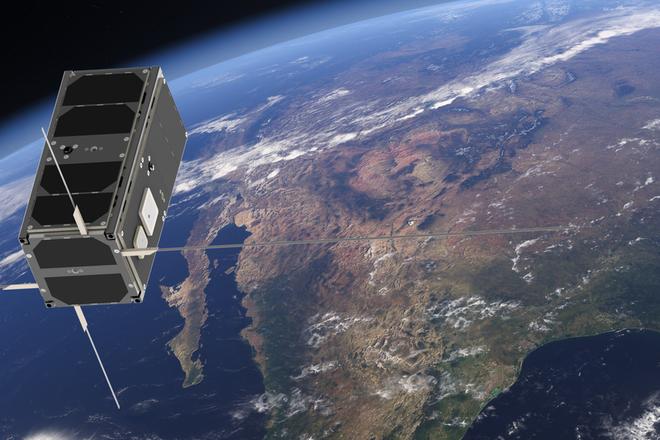While the space industry is unlikely to be mentioned much in conversations about the country’s most important economic sectors, it has been expanding in recent years, and developments in the last 12 months have underlined its potential.
In July, the fourth Slovak satellite – GRBBeta – was launched into orbit, building on the success of its predecessor GRBAlpha which ESA dubbed 'the world's smallest astrophysics space observatory'.
Like GRBAlpha, it was built by Slovak company Spacemanic, in cooperation with international partners. The satellite will test technology for a future constellation of similar satellites studying astrophysics phenomena.

To stay up to date with what scientists in Slovakia or Slovak scientists around the world are doing, subscribe to the Slovak Science newsletter, which will be sent to readers free of charge four times a year.
Building on previous success
The launch followed the success of GRBAlpha, which went into space in March 2021. A cubesat, a type of small satellite in the shape of a cube with 10-centimetre-long edges, was designed to serve as a technological demonstration that such small spacecraft can detect what is known as a gamma-ray burst (GRB). It achieved this feat in October 2022, becoming the first cubesat to do so.
Gamma-ray bursts are the brightest and most extreme explosions of energy observed in distant galaxies, lasting from milliseconds to hours. They are thought to be released when a particularly massive star implodes and forms a neutron star or black hole.
In October 2022, the most powerful GRB ever detected swept through our Solar System, triggering detectors and observatories both on the ground and in Earth's orbit, including GRBAlpha. While the sheer brightness of the event named GRB 221009A overwhelmed large satellites, GRBAlpha was able to measure the brightness at its maximum, thus both contributing to research and proving that in-orbit science can be carried out using such mall spacecraft.


 Visualisation of GRBBeta in space. The small satelite is a successor to the world’s smallest astrophysics space observatory, GRBAlpha – the first CubeSat to detect a gamma-ray burst (GRB) from space. It was built by Slovak company Spacemanic. (source: ESA/Spacemanic)
Visualisation of GRBBeta in space. The small satelite is a successor to the world’s smallest astrophysics space observatory, GRBAlpha – the first CubeSat to detect a gamma-ray burst (GRB) from space. It was built by Slovak company Spacemanic. (source: ESA/Spacemanic)